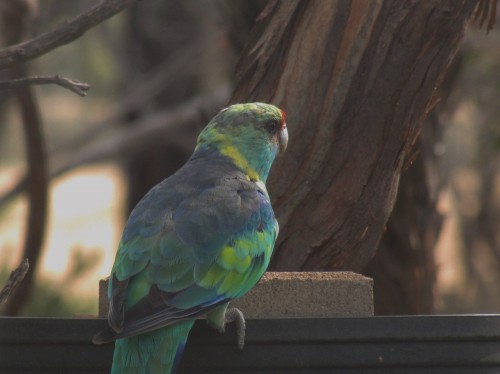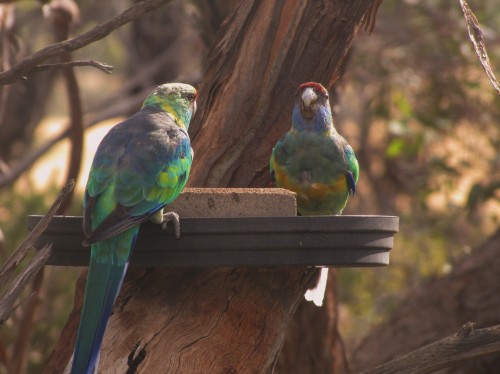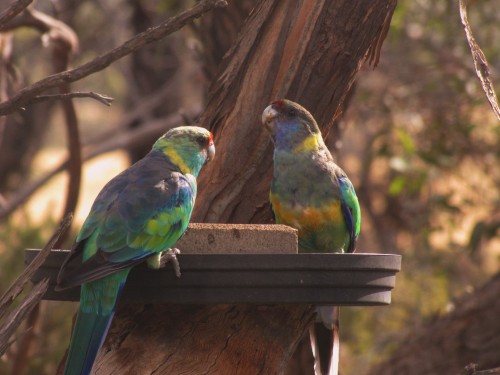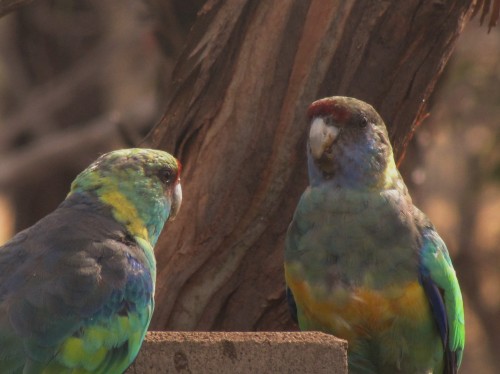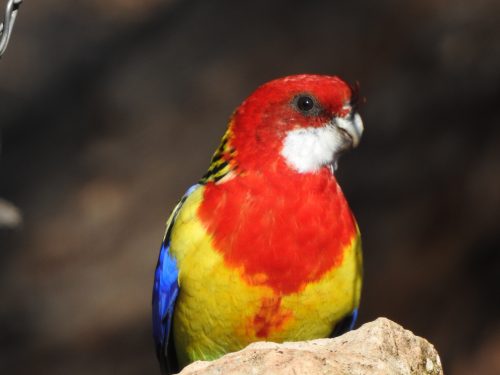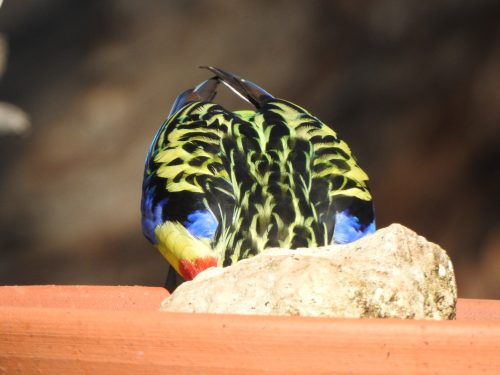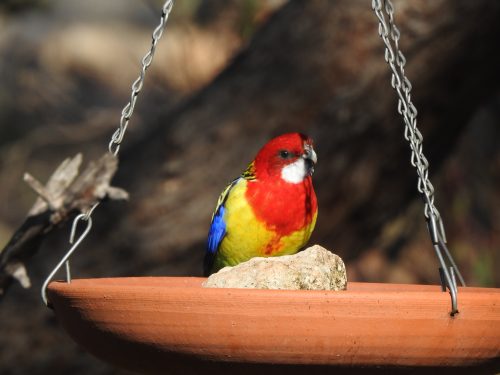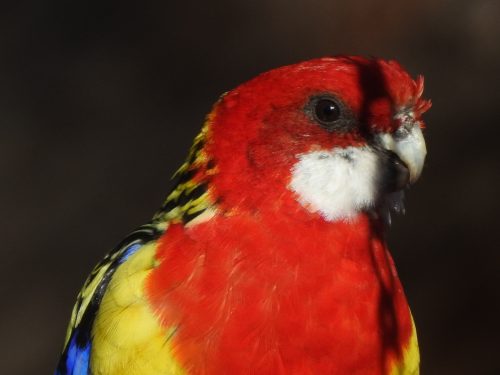Mallee Ringnecks on a hot day
During the hot weather we have experienced so far this summer here in South Australia I have had many opportunities to take photos of the constant parade of birds visiting our bird baths. We have positioned the water containers where we can see the birds from our sun room, a room we use often so we can enjoy the birds in our garden.
The Mallee Ringnecks shown in today’s set of photos are resident birds in our garden. This means that we see them every day. On several occasions in recent times they have raised a brood of young ones. We love seeing their colourful feathers as they fly around the garden and especially when they come to drink and bathe. At those times we can really get to appreciate their colours up close.
On the other hand, we have a love-hate relationship with these birds. We hate it when they get into our fruit trees, nibbling at the almost ripened fruit before we have a chance to rescue the fruits of our labours. This year, because of a bad back, I have not been able to cover the trees with netting. Consequently the birds – and possibly the resident possums as well – have taken some of our fruit. We were especially looking forward to a large crop of nectarines. (Those we were able to rescue were delicious.) I must get to the pears before the birds get to them as well.
Further reading:
- Ringnecks and kites
- Mallee Ringnecks nesting
- A small birding accident
- The beautiful Eastern Rosella parrot
Ringnecks and Kites
I was putting out the rubbish bin a few days ago. Our rubbish is collected once a week and it requires a 60 metre walk towing the bin behind – we have a long driveway.
I was in that kind of mood where the brain was in neutral and the eyes weren’t really trained for birding. It happens.
The brain suddenly snapped back into focus as a Black Kite soared low overhead, perhaps only 15 metres above me. Great views. Seemed to have a few feathers missing on the wings. I wonder what caused that? Maybe it’s been in a scrap with another bird.
As I returned to the house two Australian Ringneck parrots were sitting in a tree right next to the house. They just sat there less than 5 metres away, watching me for a minute before flying off. They are regular visitors to our garden. The above photo of one of them at our bird bath was taken last year.
This is one of the reasons I love being a birder; I don’t have to travel anywhere to enjoy my passion. The birds just come to me, insisting that I share my garden and my life with them.
All I can say is – fantastic.
Related posting:
A Ringneck mealtime
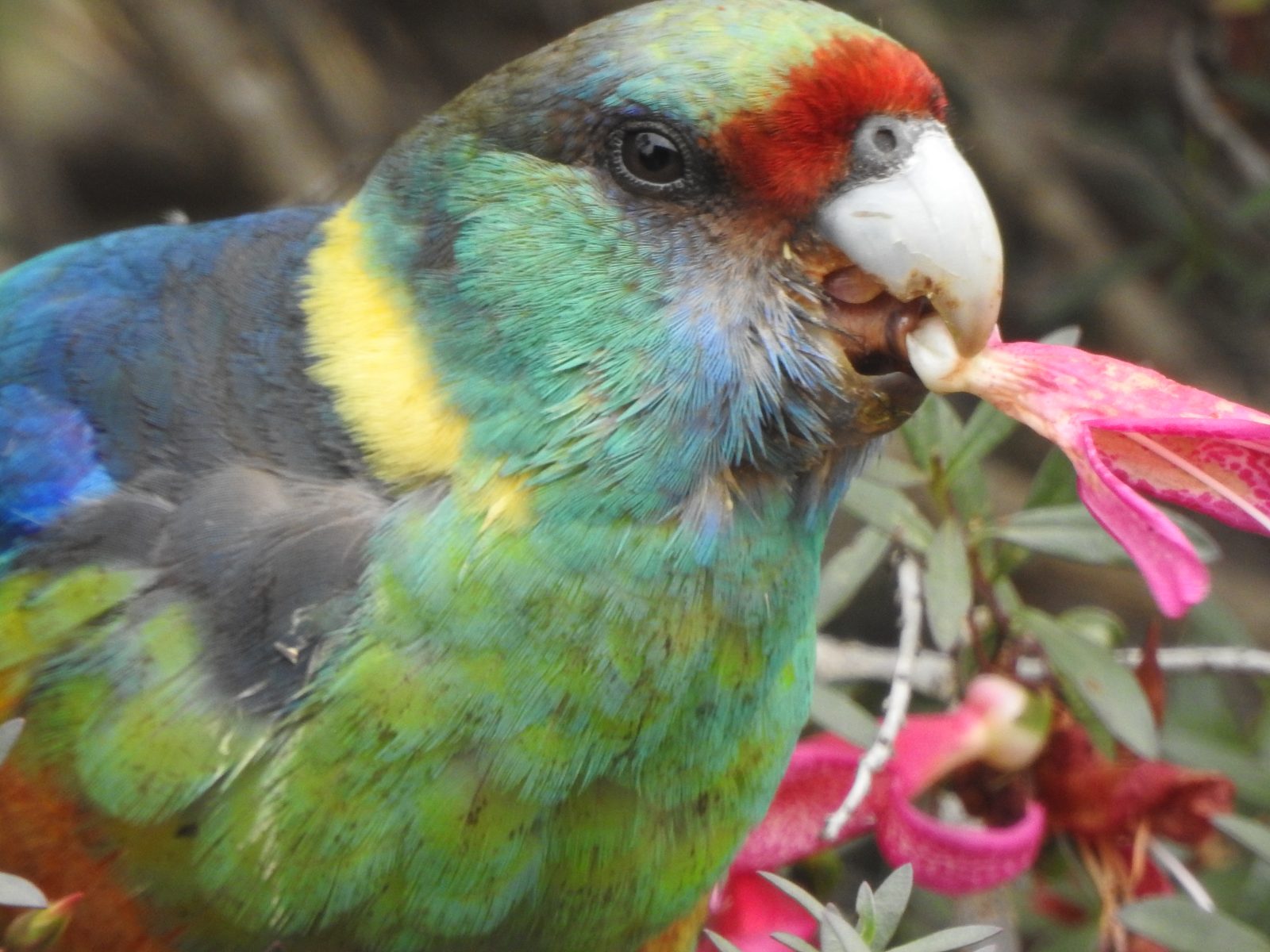
Mallee Ringneck parrots
Australian Ringneck Parrots are one of many colourful and common members of the parrot family in Australia. There are several sub-species of the ringnecks in Australia and the one I have resident in my garden is the Mallee Ringneck, named after their favoured habitat, the eucalypt trees known as mallee trees. I regard this species as a resident bird because I observe them almost every day on my 5-acre property on the edge of Murray Bridge, South Australia. They have also nested in one of the hollows in one of my trees.
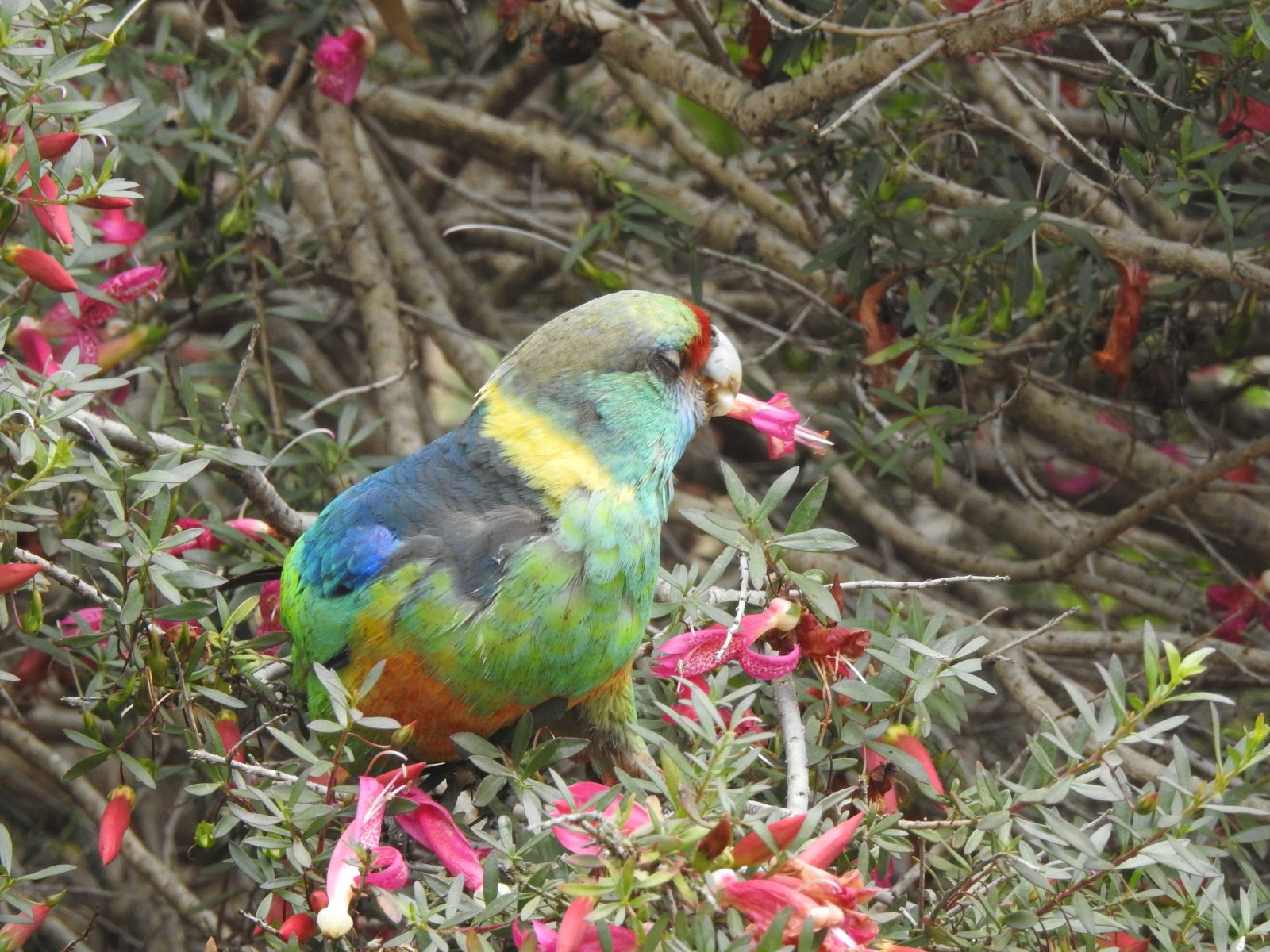
Eremophila flowers
I have a number of Eremophila plants in my garden and they are all prolific when flowering, often covering the whole bush. When my wife was still alive she also loved this family of Australian native plants and she had the foresight to plant quite a few around the garden. The plant shown in today’s photos is quite close to the front door. I can stand near the window or door and observe the birds feeding on the flowers without them being aware of my presence. Of course, the many honeyeaters in my garden also like these flowers.
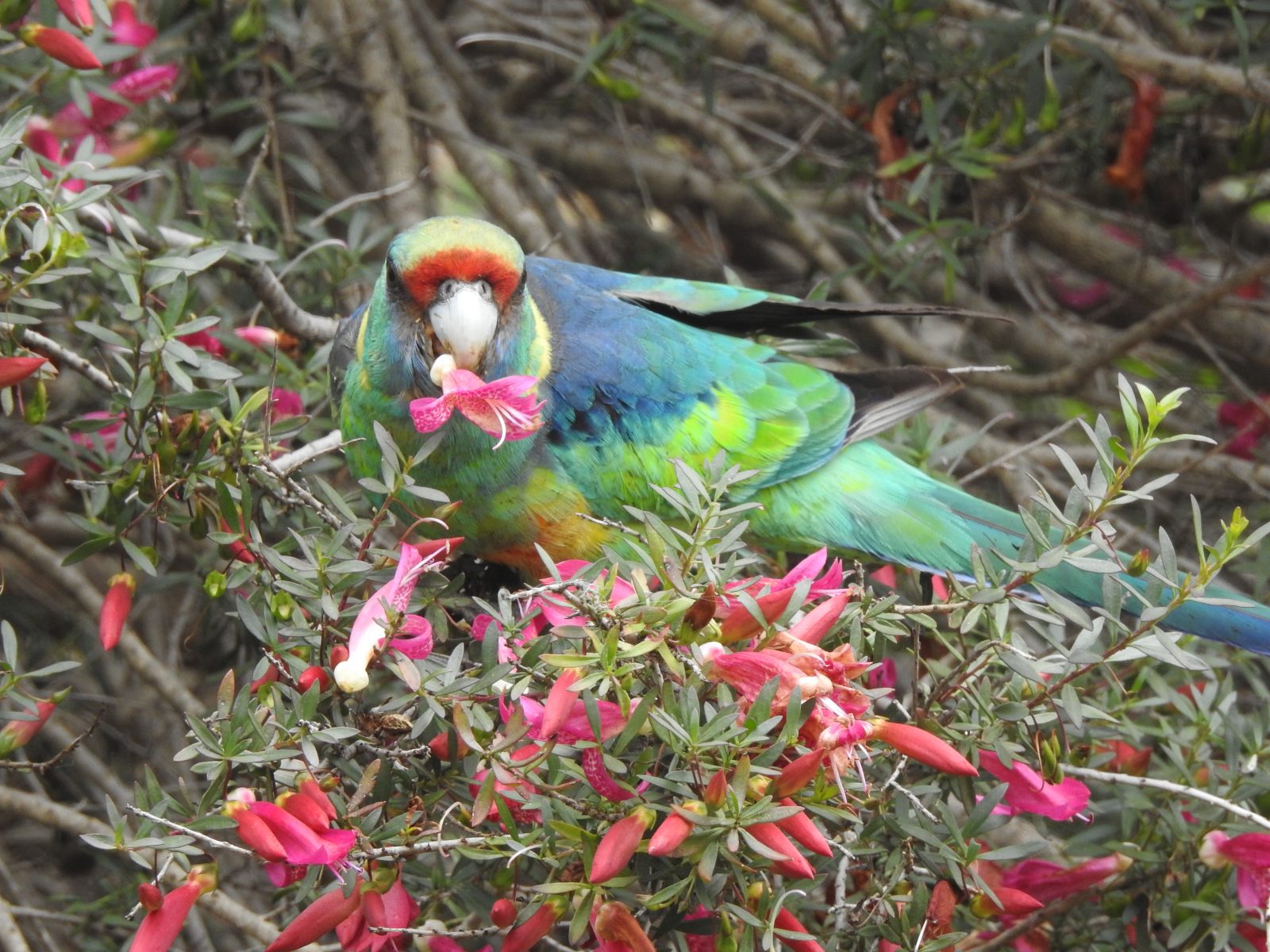
I love seeing the ringnecks flying around my garden and feeding on the various bushes in flower. They can be a little noisy at times, especially when three or four – or even more – decide to kick up a ruckus.
However, I do not appreciate the way they treat my pear trees when they have fruit on them. A few days ago I found out that they had been chewing at the green fruit. The pears are not much bigger than marbles, yet they seem to enjoy chewing on them. I guess that it is a small price to pay for having such a beautiful bird enjoying my garden.
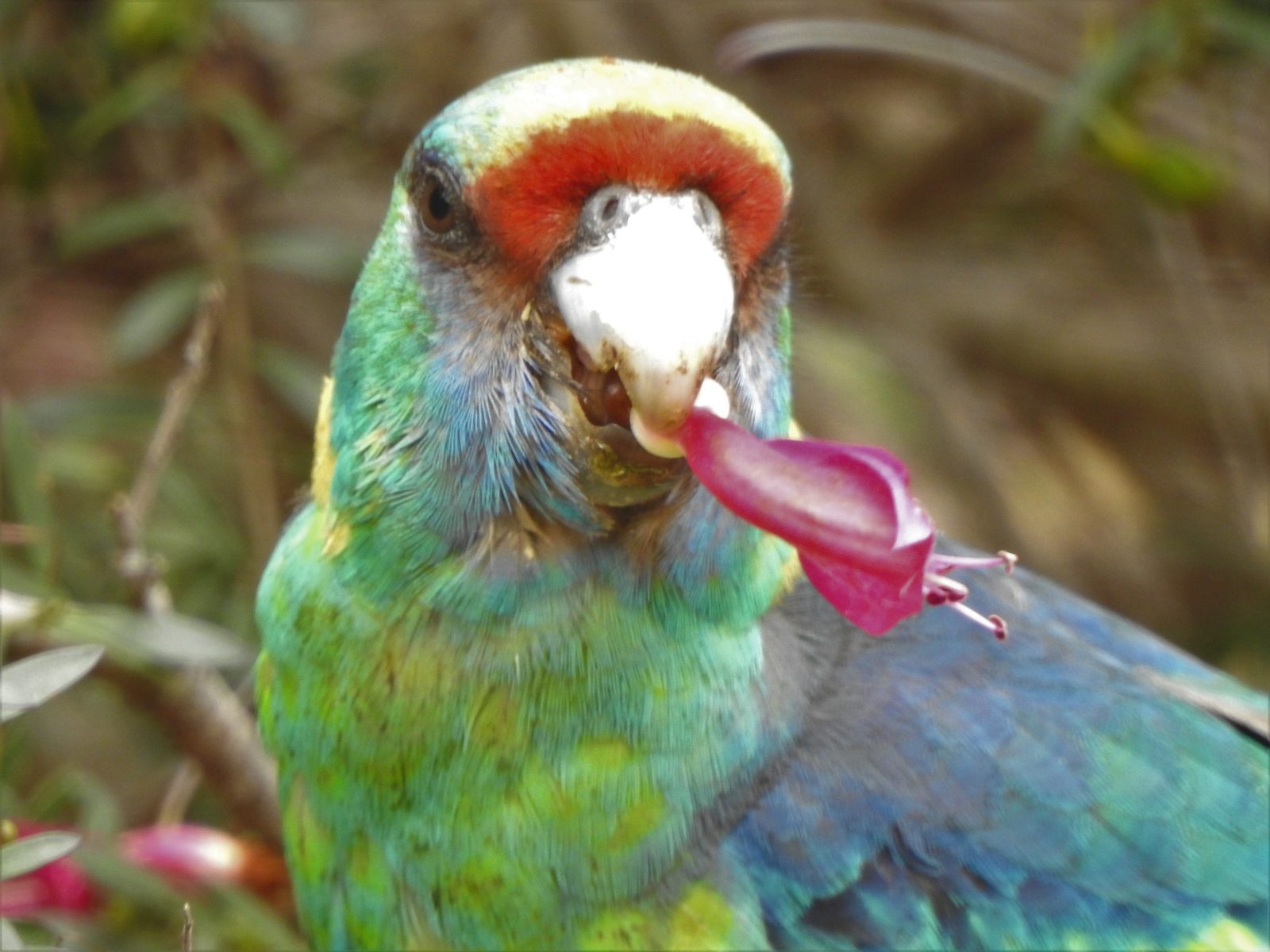
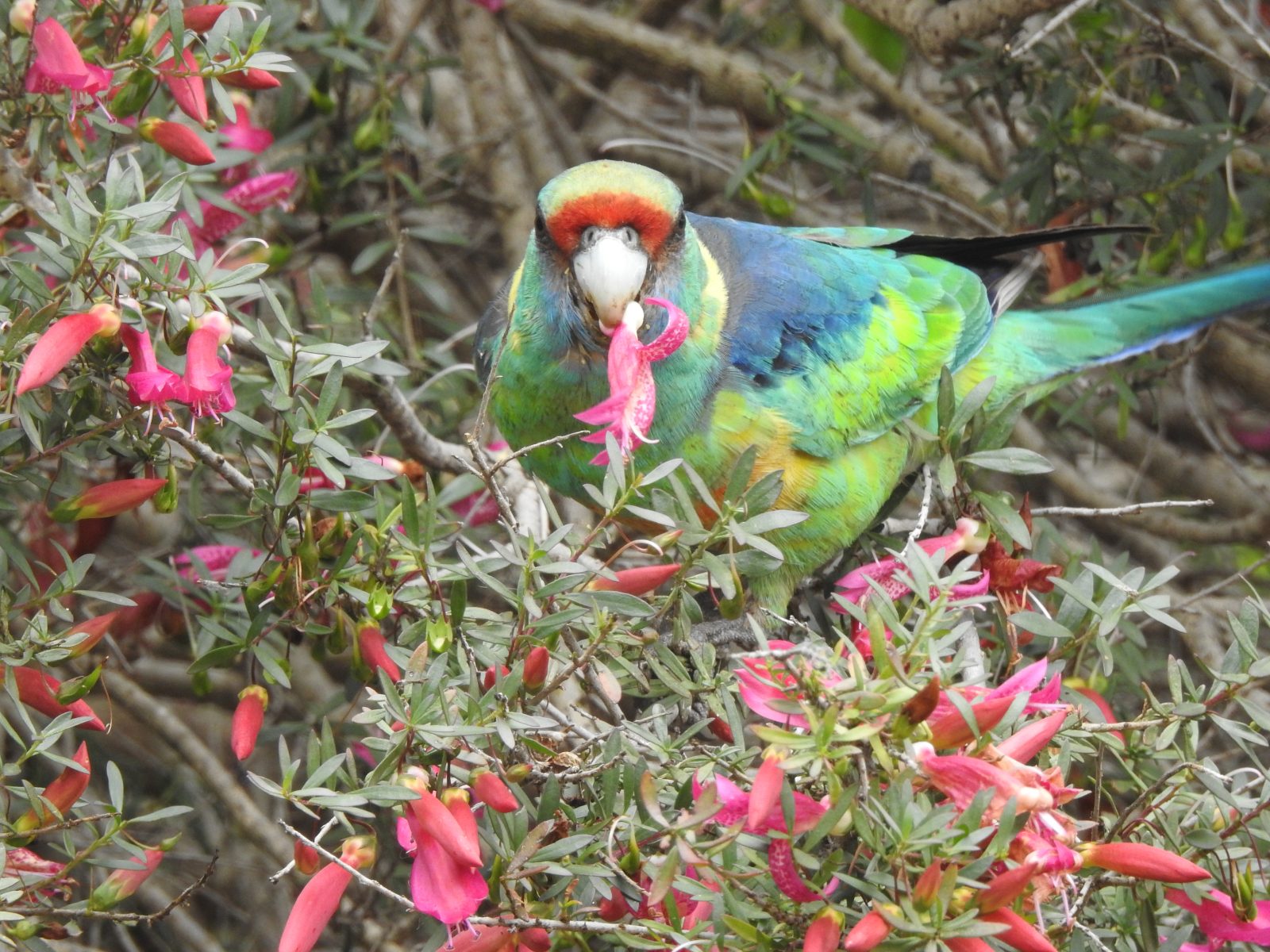
A raft of rosellas
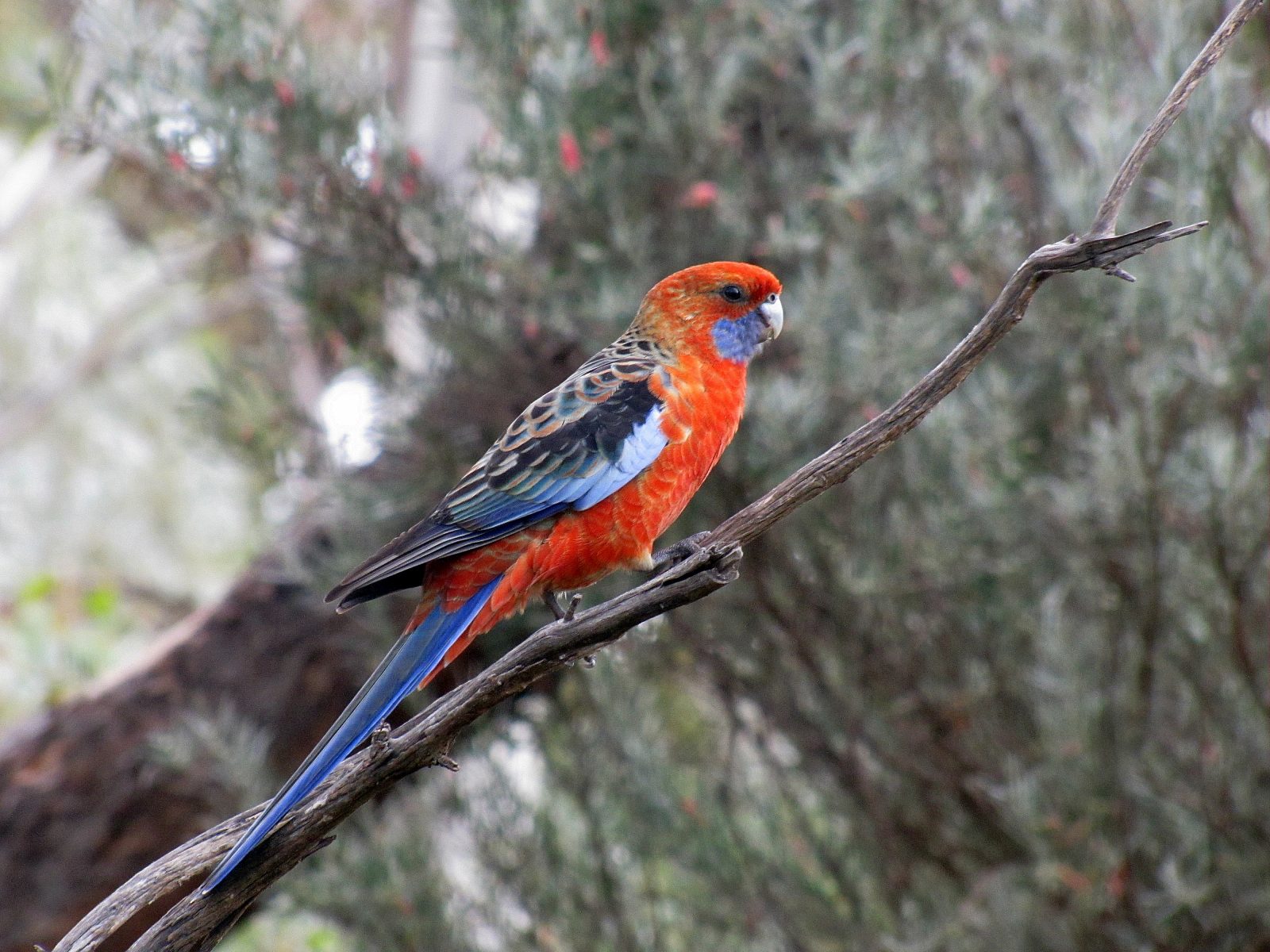
Earlier this week I spotted several birds coming in to land on the swimming pool cover in my garden. I keep the cover on the pool during the winter months to stop twigs from nearby trees falling into the water. The cover also stops excessive evaporation of the water.
During recent months, however, the winter rains have been quite good here where I live in Murray Bridge, South Australia. Other regions have been in serious drought conditions. Whenever it rains, small, shallow puddles of water gather on top of the pool cover. These pools are very inviting to the local birds and any others passing by.
When I stealthily crept closer to the pool I discovered three Adelaide Rosellas had landed on the pool cover and they were having a lovely time splashing around in the shallow pools of water. I crept quietly back into the house to get my camera, but by the time I came out again they were ready to leave. I didn’t get a chance to take some photos.
When I first moved to my home on the western edge of town over 30 years ago, I never recorded Adelaide Rosellas in my garden. Over the last ten to 15 years, their visits have become more and more frequent. Sometimes several months go by without sighting them, and then I will see some several months in a row. I guess you could say that their visits are somewhat sporadic. I certainly cannot call them a resident species like the Mallee Ringnecks which are always around somewhere on my five-acre block.
The Adelaide Rosella is a sub-species of the Crimson Rosella, common here in the southern parts of South Australia, as well as throughout the eastern states. I have also seen the Yellow Rosella nearby, another sub-species.
Because I didn’t get a chance to get a photo of the three visitors this week, I have used a photo of one taken some years ago (see above).
The beautiful Eastern Rosella
The beauty of our Australian parrots never fails to impress me. One of the most beautiful to my eyes is the Eastern Rosella which I have featured in today’s photos. All of the photos shown in today’s post were taken in my garden on the outskirts of Murray Bridge which is about 80 kilometres south-east of Adelaide in South Australia.
This particular individual has been resident in my garden for several years now. I usually see it every day but I am sure that it roams over a much greater area than my 2 hectare (5 acre) property. One of the odd things about this bird is that it continues to keep the company of a family of Mallee Ringneck parrots. The ringnecks are also a resident species and they also roam away from my property most days. Some days they will hang around feeding in my trees for most of the day, sometimes creating quite a din with their noisy chatter.
One of the odd things about this rosella is that I am quite confident that it is the same one I am seeing all the time. They are not normally found in this part of South Australia. Their usual range is the extreme south-eastern part of our state. They are also quite common in the Adelaide region and the adjacent Adelaide Hills (Mt Lofty Ranges) where they have been introduced.
This leads me to two possible conclusions about this particular bird:
- It has escaped, or been released, from someone’s cage or aviary. (They are a common pet in Australia.)
- The species is extending its range, either from the south, or from the west.
I lean towards the first conclusion, mainly because I have not seen any more of this species anywhere around this area. Whatever the reason, I am delighted that it has decided to call my garden “home”. I am also pleased that it frequently visits the bird baths I have close to my sunroom. This enables me to get good photos of it every so often.
Up until this series of photos were taken, I hadn’t fully appreciated the beautiful markings on the back. The photo below shows these markings really well.
Good birding.
Further reading:
